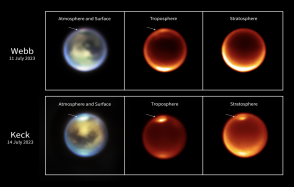Expedition IODP 357 – Life and serpentinization of the Atlantis Massif
An international team of 32 scientists, including 3 IPGP members, led by Gretchen Früh-Green from ETH Zurich (Switzerland) and Beth Orcutt from the Bigelow Laboratory for Ocean Sciences (USA) is taking part in the IODP 357 expedition "Atlantis Massif Serpentinization and Life".
Publication date: 01/01/2016
Research
Related teams :
Marine Geosciences, Lithosphere Organosphere Microbiosphere (LOMs)
Related themes : Origins








